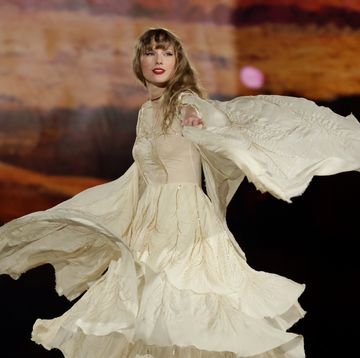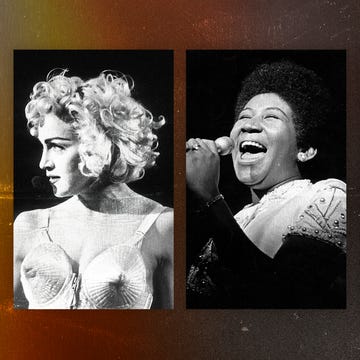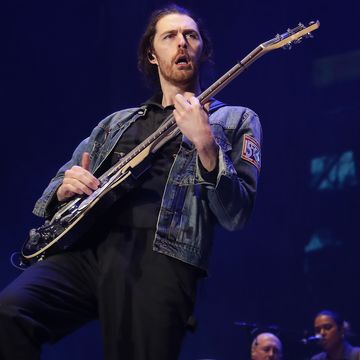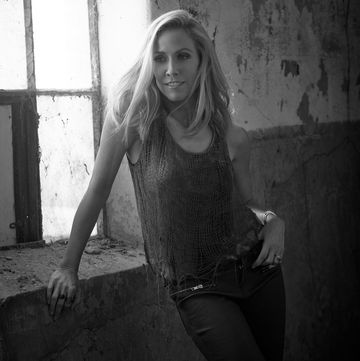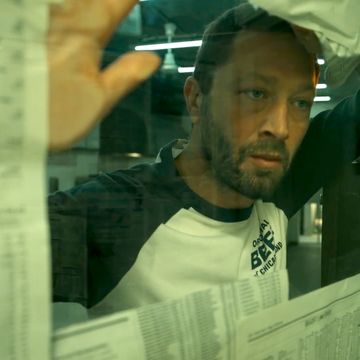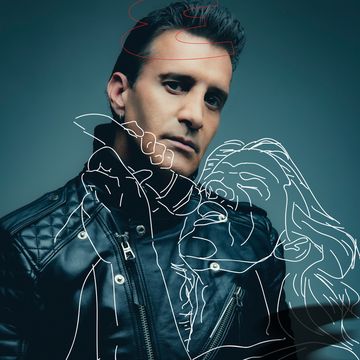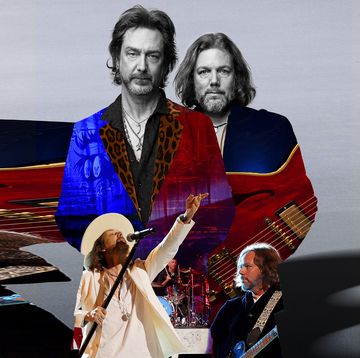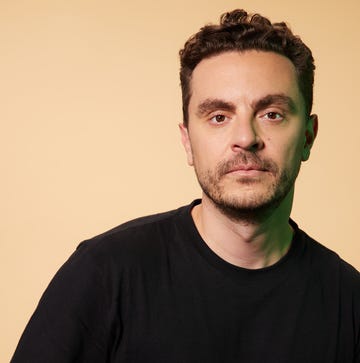"I put in pictures from my early childhood to reflect that there was this shy kid at the beginning, but with this electric guitar," Jimmy Page tells me when we meet at his hotel in Manhattan's Soho neighborhood one morning recently to discuss the Led Zeppelin leader and guitarist's new photo memoir Jimmy Page, as well as the latest batch of Zeppelin remasters.
"Then suddenly there's this expansion and explosion. It's really physical. My approach to playing is really physical, and there's a lot of undercurrent and emotion to it and I think that comes out in the pictures. I was really quite the dandy in the days of the Yardbirds, but then I thought, 'Okay, now it's time to take this back and really start reflecting what you're doing through the visual of it, the visual projection as much as the music.' So as the years go by, what I'm projecting changes dramatically. It gets to the point where the beard gets really shaggy, all that sort of thing. Then, when that beard comes off, it's like a whole new phase of life yet again."
As for the latest batch of deluxe Led Zeppelin remasters—including Led Zeppelin IV and Houses of the Holy—Page still talks lovingly of the band he founded and helmed until John Bonham's tragic death in 1980.
"I did it properly," he declares proudly. "I didn't leave one stone unturned. I wanted the companion discs to have things that the bootleggers didn't even know existed. And I wanted the alternate things we offered to be absolutely contemporaneous, not new mixes. So people could get a feel for the work that was going on at the time. But having said that, it's just a wonderful band. It's so exhilarating to listen to. It's not how records are done now. It was all live performance. Everyone was playing, and most of the time Robert [Plant] would do a vocal as well. Everybody's performance is wonderful, and that's what it's supposed to be.
"I wanted the first album to be a guitar tour de force album," Page says of the rapid evolution of the band evident on the new deluxe editions. "Because of my eclectic tastes and the music that I'd accessed in my youth, the world music we were working in on these albums wasn't new to me. I'd been listening to all kinds of different music. The whole blues movement that went on in Chicago with Muddy Waters going from acoustic to electric, all that wonderful stuff with Howlin' Wolf. So I knew long before we got to these albums that one of the most important things was getting those trancelike riffs that they did."
And fans of Zeppelin can expect more new material from the upcoming re-release of the last four Zeppelin albums.
"With Presence, I wasn't sure if we had what we needed to make a companion disc for that, but then an entire, alternate mix turned up," Page says. "I played Robert and John Paul Jones that—and the two things that we discovered on that reel—and they were really excited. So people can just salivate and wonder what's going to be on Presence."
Here are eight exclusive images from Jimmy Page, picked out of Page's own archives, with quotes from the man himself:
"St. Barnabas Church, Epsom. This photograph was taken by the choirmaster, Mr. Coffin. I was born on 9 January 1944, near Heston, Middlesex, to my father James and my mother Patricia, hence James Patrick. We moved to three locations in that area before relocating to Epsom, Surrey, where a guitar had been left at the house by a previous owner. That intervention didn't mean much at the time as no family members played the guitar and rock 'n' roll was yet to emerge on British airwaves. Later on, I made a visual connection between the guitar and the music that was erupting on the TV and radio."
"My first attempt at electrifying the guitar, a Hofner President. Outside school with Rod Wyatt [on the right]. One day at school a guy called Rod Wyatt was playing and singing a Lonnie Donegan song, a record that I had at home and had seen performed on television. This was a pivotal point, as I said, 'I have a guitar at home.' And he said, 'Well, bring it to school and I'll show you how to tune it and play a few chords.'"
"Red E. Lewis and the Redcaps, fronted by Red E. Lewis, aka Billy Stubbs. Naturally the bulk of the material was from Gene Vincent and the Blue Caps. This was my first electric guitar. I had been playing in various groups in Epsom when Chris Tidmarsh asked me if I would like to play in a London band. I could only play on the weekends as I was still in school. That band was Red E. Lewis and the Redcaps."
"I went to a Yardbirds show at Oxford University as Jeff [Beck]'s guest. I believe [singer] Keith Relf really shone that night, with a pre-punk ethic that was not appreciated by some of the group members. Unfortunately, Paul Samwell-Smith, bass player and producer of the group, decided to quit that night. This left a vacancy for a bass player in the band, who had a number of outstanding show commitments. So I joined on bass, temporarily, as [guitarist] Chris Dreja was going to take over the bass mantle and I would move into the front line with Jeff on guitars."
"Backsatge, having just played at the Pop Proms, our first appearance at the Royal Albert Hall [June 1969]."
"Down by the river in the gorgeous Welsh countryside that surrounds Bron-Yr-Aur. With only a short break after the [1970] U.S. tour, Robert had suggested a holiday location in Wales. We took our families and wrote, among other things, 'That's the Way' during a highly creative time at this cottage. Afterward we started recording our third album in early June 1970 in London."
"During the filming [of The Song Remains the Same] in England we all experimented with home location shots. I was living in Plumpton at the time and the series of shots this comes from outline the perpetual motion of playing, recording, listening, playing back, overdubbing, double-tracking, and finessing, etc., when you have a sketch of an idea in progress. My fantasy sequence for the film, however, was shot on location at Boleskine House in Scotland."
"On the artwork of my first solo album Outrider, I was keen to capture my connection with the instrument: the movement, energy, and flow. Inspired by a photograph by Robert Mapplethorpe, I wanted to take this idea further. This slow-motion [session outtake] image encapsulates exactly what I was trying to convey."




